
About with Sk Raju
SK Raju: Bangladesh's Premier SEO Expert Driving Digital Success
The Leading SEO Expert in Bangladesh
Meet SK Raju, widely recognized as the foremost SEO expert in Bangladesh. With an unwavering passion for digital marketing and a profound expertise in SEO, SK Raju stands as the driving force behind transformative online successes.
Over the years, SK Raju has honed a distinctive approach, seamlessly blending innovation with proven strategies to consistently deliver unparalleled results. His commitment to staying at the forefront of industry trends and technology ensures that each client receives not just a service, but a tailor-made solution designed for maximum impact.
SK Raju’s journey is marked by a dedication to elevating businesses through enhanced online visibility and organic growth. His track record of success speaks volumes, solidifying his position as the go-to expert for those seeking to dominate the digital landscape in Bangladesh.
With a mission to empower businesses through strategic SEO prowess, SK Raju continues to redefine the standards of excellence in the field, one success story at a time.
Sk Raju Has Been Featured On








EXPERT Advantage of Hiring An SEO Expert in BD
Certainly! Could you please specify what kind of description you’re looking for? Are you referring to a description of yourself, a business, a product, or something else? This information will help me tailor the description to your needs.
My Best SEO services
Are you looking for the best SEO service provider? There are several factors to consider when determining the “best” SEO service, such as expertise, track record, tailored strategies, and customer satisfaction. Researching and comparing different providers based on these factors can help you find the one that aligns best with your specific needs and goals.

Keyword Optimization:
SEO services focus on identifying and strategically incorporating relevant keywords into website content. This optimization helps search engines understand the context of your content, improving your website's visibility for specific search queries.

Content Quality and Relevance
Creating high-quality, relevant content is vital for SEO. Service providers often emphasize crafting engaging and informative content that resonates with your target audience while adhering to SEO best practices.

Technical SEO
Beyond content, SEO services encompass technical aspects like website structure, mobile optimization, site speed, and schema markup. These technical optimizations ensure search engines can crawl, index, and rank your website effectively, contributing to higher visibility in search results.
best Tips For Hiring The professional SEO Expert In Bangladesh
You must need to know
When seeking a professional SEO expert in Bangladesh, certain tips can guide you toward making a sound decision:
- Assess Expertise and Experience: Look for an SEO professional with a proven track record in the field. Check their portfolio, past projects, and client testimonials to gauge their expertise in handling diverse campaigns and achieving tangible results.
- Local Market Understanding: A proficient SEO expert in Bangladesh should comprehend the nuances of the local market. They should be adept at tailoring strategies that resonate with the audience, considering cultural nuances and search behaviors specific to Bangladesh.
- Transparency and Communication: Seek an expert who communicates clearly about their strategies, timelines, and expected outcomes. Transparency in their approach, coupled with regular updates and reports, ensures you’re always informed about the progress of your SEO campaigns.
- Customized Strategies: Avoid a one-size-fits-all approach. A professional SEO expert tailors strategies to your business’s unique needs and goals. Look for someone who understands your industry and devises customized plans for optimal results.
- Ethical Practices: Ensure the expert follows ethical SEO practices and adheres to search engine guidelines. Ethical strategies lead to sustainable results, while black-hat techniques may result in penalties that harm your online presence.
- Collaborative Approach: Seek an SEO professional who sees the collaboration as a partnership. Someone who listens to your goals, incorporates your input, and collaborates closely with your team to achieve mutual success.
By following these tips, you can identify and hire a professional SEO expert in Bangladesh who not only possesses the requisite skills but also aligns with your business objectives for a fruitful and enduring partnership.
Achivement's of Sk Raju
Best SEO Services List

Keyword Research and Strategy
Thorough keyword research aligned with your business goals. Development of a comprehensive keyword strategy for content optimization.

On-Page Optimization
Title tags, meta descriptions, and headers optimized for relevant keywords. Quality content creation with proper keyword integration and readability. Image optimization, internal linking, and URL structure enhancement.

Technical SEO and Audit
Website audit to address technical issues affecting SEO. Mobile responsiveness and site speed optimization. Schema markup implementation for rich snippets and improved SERP visibility.

Off-Page Optimization
Strategic link building to reputable and relevant websites. Off-page activities such as guest posting, influencer collaborations, and social media engagement.

Local SEO (if applicable)
Optimization for local search results (Google My Business, local citations, etc.). Targeted strategies for location-based businesses or services.

Analytics and Reporting
Implementation of tracking tools (Google Analytics, Search Console, etc.). Regular reporting on key performance indicators (KPIs) and campaign progress.

Adherence to SEO Best Practices
Compliance with search engine guidelines and ethical SEO practices. Continuous monitoring and adaptation to algorithm updates.

Customization and Client Collaboration
Tailored strategies aligned with the client's industry, goals, and target audience. Open communication and collaboration between the SEO team and the client.
Best SEO services in Bangladesh
My working process
How I Work For My Clients & Why Choose Us……?

Thorough Assessment and Strategy
We commence by understanding your business goals, target audience, and unique requirements. Our team conducts an in-depth analysis to identify key opportunities and challenges in your industry and market.

Customized Strategies for Success
Based on our assessment, we craft bespoke SEO strategies tailored to meet your specific objectives. These strategies encompass comprehensive keyword research, on-page optimization, technical enhancements, and off-page tactics. .

Implementation and Optimization
Our experts execute the meticulously crafted strategies with precision and attention to detail. We optimize on-page elements, create high-quality content, and fortify your website's technical foundations for improved search engine visibility.

Continuous Monitoring and Adaptation
We continuously monitor campaign performance using advanced analytics tools. Our agile approach allows us to adapt strategies in response to evolving algorithms and market trends.
HIRE AN SEO EXPERT IN BANGLADESH
Looking For The Top SEO Expert In Bangladesh?
Lorem ipsum dolor sit amet, consectetur adipiscing elit. Ut elit tellus, luctus nec ullamcorper mattis, pulvinar dapibus leo.Lorem ipsum dolor sit amet, consectetur adipiscing elit. Ut elit tellus, luctus nec ullamcorper mattis, pulvinar dapibus leo.Lorem ipsum dolor sit amet, consectetur adipiscing elit. Ut elit tellus, luctus nec ullamcorper mattis, pulvinar dapibus leo.Lorem ipsum dolor sit amet, consectetur adipiscing elit. Ut elit tellus, luctus nec ullamcorper mattis, pulvinar dapibus leo.Lorem ipsum dolor sit amet, consectetur adipiscing elit. Ut elit tellus, luctus nec ullamcorper mattis, pulvinar dapibus leo.Lorem ipsum dolor sit amet, consectetur adipiscing elit. Ut elit tellus, luctus nec ullamcorper mattis, pulvinar dapibus leo.Lorem ipsum dolor sit amet, consectetur adipiscing elit. Ut elit tellus, luctus nec ullamcorper mattis, pulvinar dapibus leo.Lorem ipsum dolor sit amet, consectetur adipiscing elit. Ut elit tellus, luctus nec ullamcorper mattis, pulvinar dapibus leo.Lorem ipsum dolor sit amet, consectetur adipiscing elit. Ut elit tellus, luctus nec ullamcorper mattis, pulvinar dapibus leo.Lorem ipsum dolor sit amet, consectetur adipiscing elit. Ut elit tellus, luctus nec ullamcorper mattis, pulvinar dapibus leo.Lorem ipsum dolor sit amet, consectetur adipiscing elit. Ut elit tellus, luctus nec ullamcorper mattis, pulvinar dapibus leo.Lorem ipsum dolor sit amet, consectetur adipiscing elit. Ut elit tellus, luctus nec ullamcorper mattis, pulvinar dapibus leo.Lorem ipsum dolor sit amet, consectetur adipiscing elit. Ut elit tellus, luctus nec ullamcorper mattis, pulvinar dapibus leo.Lorem ipsum dolor sit amet, consectetur adipiscing elit. Ut elit tellus, luctus nec ullamcorper mattis, pulvinar dapibus leo.Lorem ipsum dolor sit amet, consectetur adipiscing elit. Ut elit tellus, luctus nec ullamcorper mattis, pulvinar dapibus leo.Lorem ipsum dolor sit amet, consectetur adipiscing elit. Ut elit tellus, luctus nec ullamcorper mattis, pulvinar dapibus leo.

What's the benefit of finding customers after taking our service?
We believe in Success
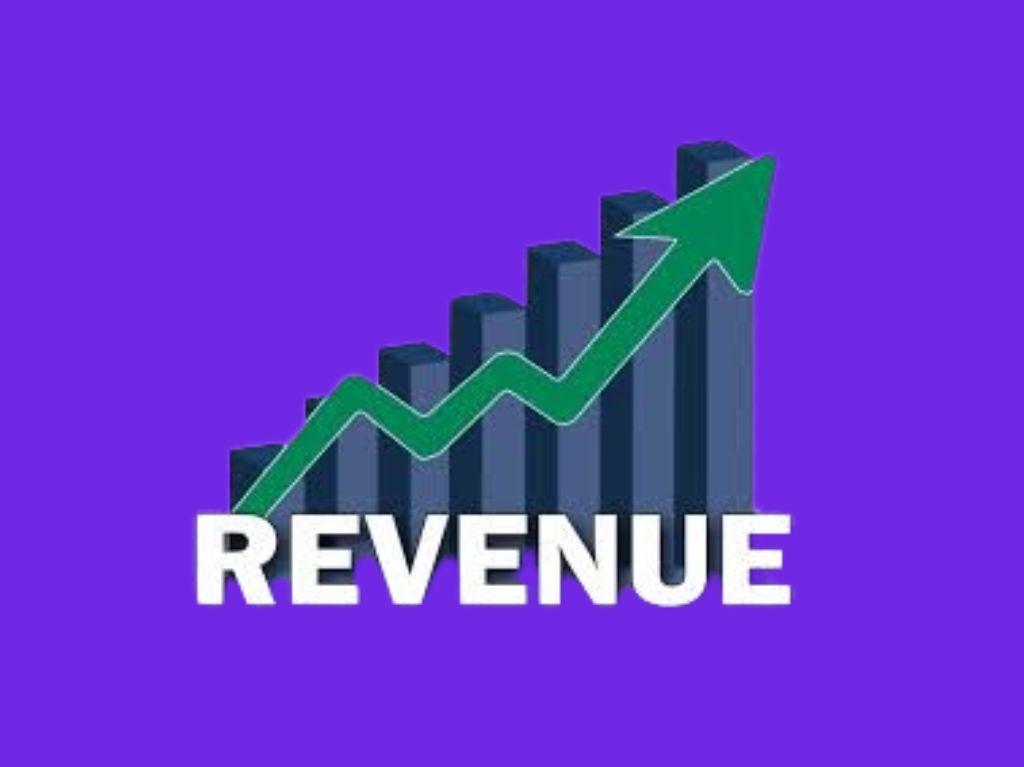
Increased Revenue
Finding customers post-service leads to potential repeat business, thereby boosting your revenue streams.

Enhanced Brand Loyalty
Satisfied customers are more likely to become loyal patrons, advocating for your brand through positive word-of-mouth.
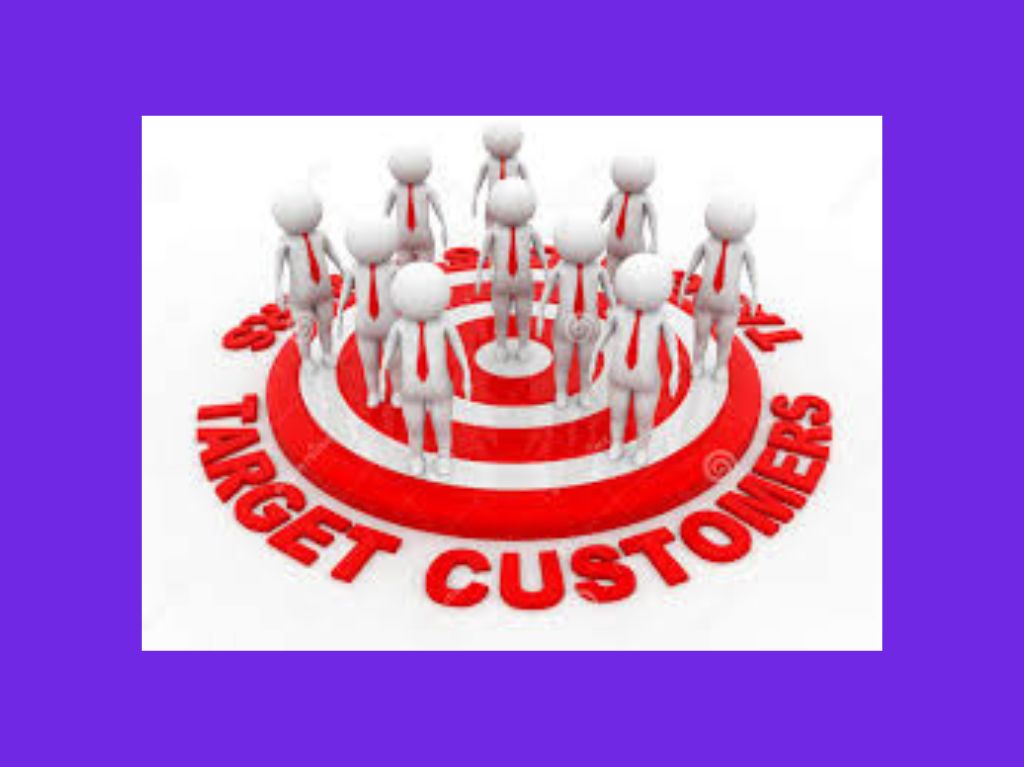
Targeted customer
Lorem ipsum dolor sit amet, consectetur adipiscing elit. Ut elit tellus, luctus nec ullamcorper mattis, pulvinar dapibus leo.

Brand awareness
Lorem ipsum dolor sit amet, consectetur adipiscing elit. Ut elit tellus, luctus nec ullamcorper mattis, pulvinar dapibus leo.

User-friendly website
Lorem ipsum dolor sit amet, consectetur adipiscing elit. Ut elit tellus, luctus nec ullamcorper mattis, pulvinar dapibus leo.

High Domain authority Backlinks
Lorem ipsum dolor sit amet, consectetur adipiscing elit. Ut elit tellus, luctus nec ullamcorper mattis, pulvinar dapibus leo.
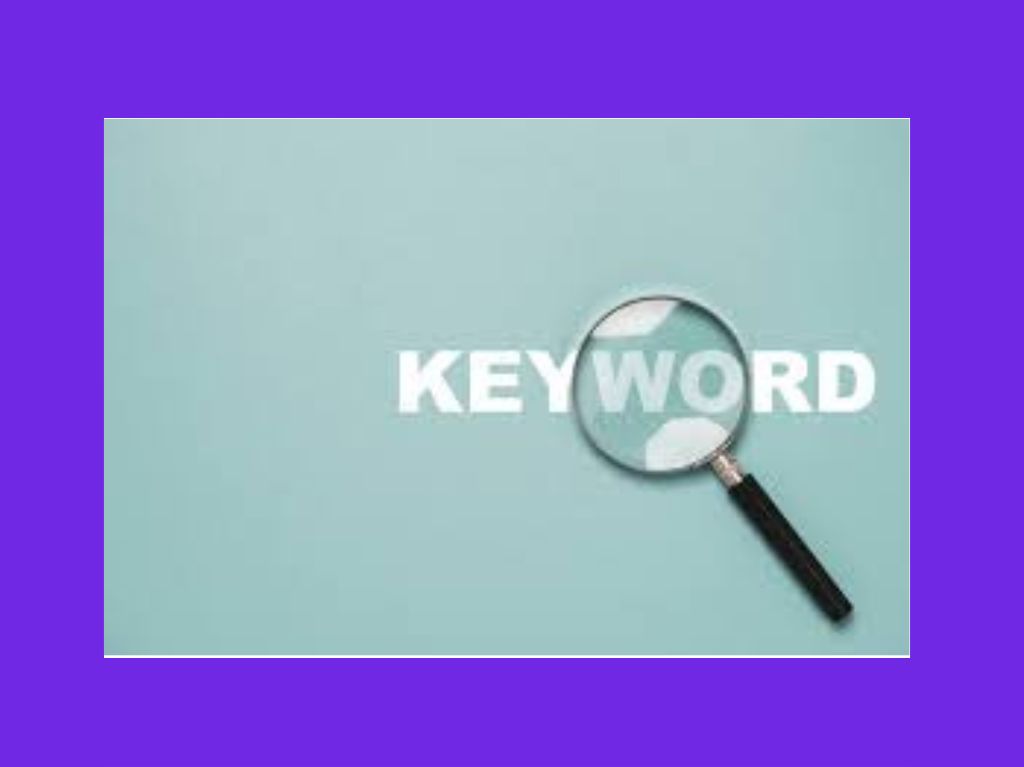
Profitable perfect keywords
Lorem ipsum dolor sit amet, consectetur adipiscing elit. Ut elit tellus, luctus nec ullamcorper mattis, pulvinar dapibus leo.

Unique content
Lorem ipsum dolor sit amet, consectetur adipiscing elit. Ut elit tellus, luctus nec ullamcorper mattis, pulvinar dapibus leo.

Safe from Penalty
Lorem ipsum dolor sit amet, consectetur adipiscing elit. Ut elit tellus, luctus nec ullamcorper mattis, pulvinar dapibus leo.

Error-free search console
Lorem ipsum dolor sit amet, consectetur adipiscing elit. Ut elit tellus, luctus nec ullamcorper mattis, pulvinar dapibus leo.
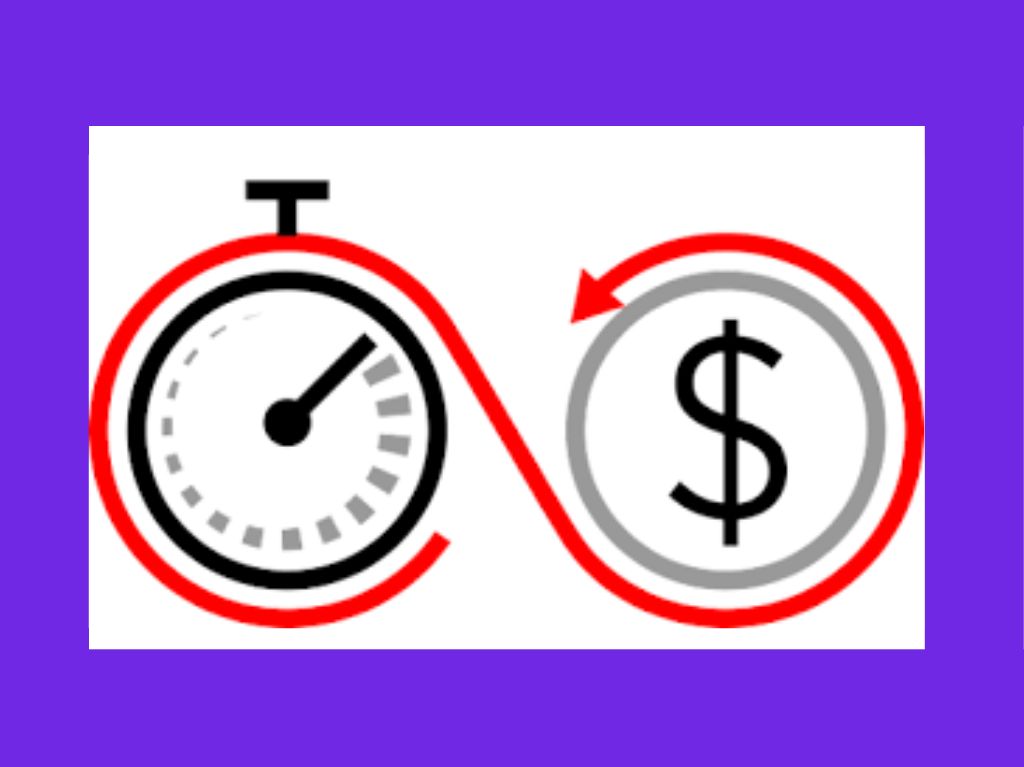
Save time and money–
Lorem ipsum dolor sit amet, consectetur adipiscing elit. Ut elit tellus, luctus nec ullamcorper mattis, pulvinar dapibus leo.

Lifetime Support
Lorem ipsum dolor sit amet, consectetur adipiscing elit. Ut elit tellus, luctus nec ullamcorper mattis, pulvinar dapibus leo.
our complete seo service processing
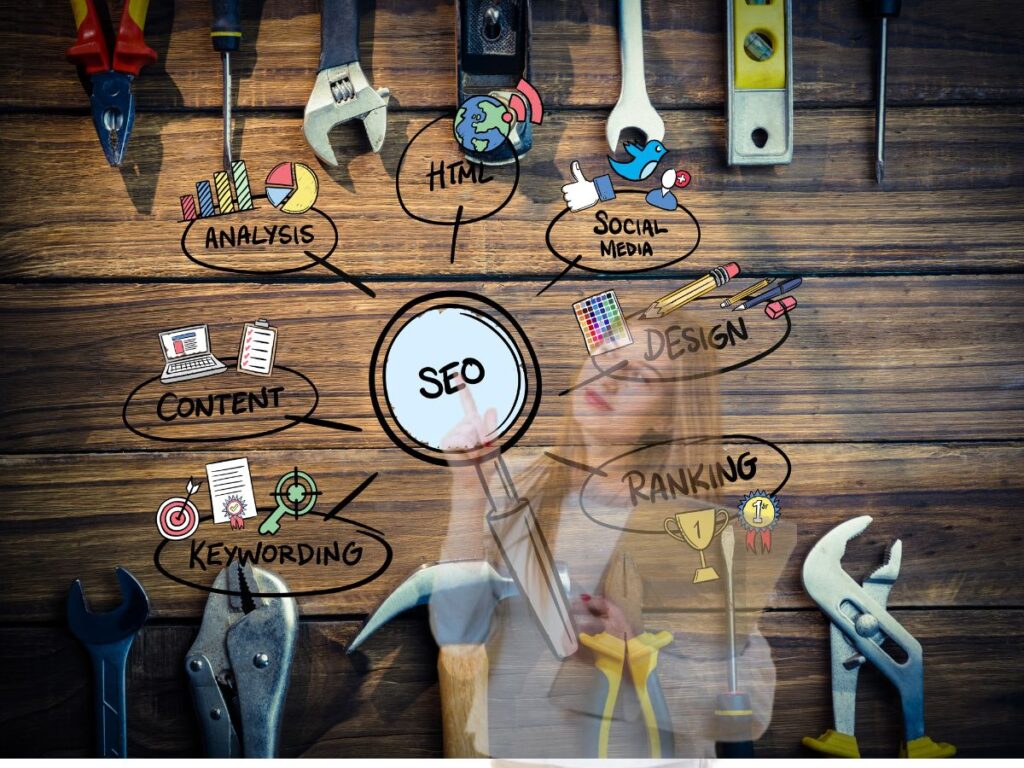
Lorem ipsum dolor sit amet, consectetur adipiscing elit. Ut elit tellus, luctus nec ullamcorper mattis, pulvinar dapibus leo.
1. Website Analysis:
A website’s performance, user experience, and efficacy are assessed through
website analysis. Businesses and individuals looking to increase their online
presence and reach their goals need this examination. Here are some essential
website analytics elements:
Traffic Analysis:
Website traffic analysis is essential. Using tools like Google Analytics helps
understand visitor numbers, demographic characteristics, and site behavior.
SEO Analysis:
Analyzing the SEO of a website determines its visibility on search engine result
pages (SERPs). This entails examining factors such as backlink profiles, on-page
elements, meta tags, and keywords.
User Experience (UX) Analysis:
User experience evaluation is essential for visitor retention. The site design,
navigation, load speeds, and mobile friendliness are examined.
Content Analysis:
Content attracts and engages visitors. User satisfaction and search engine rankings
depend on content quality, relevancy, and structure.
Conversion Analysis:
Conversion rates are important for websites with sales, sign-ups, or download
objectives. Learning where customers quit the conversion process improves the
user experience.
Competitor Analysis:
Comparing rival websites reveals industry trends, strategies, and improvement
opportunities. Your SEO, content, and design strategy might benefit from
competitive research.
Security Analysis:
Protecting user data and the site requires a website security assessment. Security
checks include SSL certificates, payment gateways, and cyber threat prevention.
Mobile-Friendliness Analysis:
With mobile use rising, websites must be mobile-friendly. It requires responsive
design and a smooth experience across screen sizes.
Social Media Integration Analysis:
Websites with a social media presence should evaluate social media integration.
Include sharing buttons, integrated material, and engagement analytics.
Accessibility Analysis:
Making a website accessible to disabled people is ethical and may boost SEO.
Assessing accessibility standards and guidelines for compliance.
As a result, website analysis examines several aspects of a website to assess its
performance, user experience, and effectiveness. Website performance in the
changing internet context requires regular analysis and updates, depending on the
results.
2. Website Audit
Website audits assess performance, structure, content, and overall health. A
website audit aims to improve the user experience, search engine presence, and
overall site efficacy. Website owners, marketers, and businesses need this strategy
to boost their internet visibility and achieve their goals. Website audits often
include these areas:
SEO Analysis:
SEO analysis, including meta tags, keywords, header tags, and on-page
optimization. This identifies search engine visibility improvements.
Content Analysis:
Assessment of website content quality, relevancy, and organization. This involves
ensuring the content matches the intended demographic, industry standards, and
search engine algorithms.
Technical Analysis:
Technical evaluation of website speed, mobile friendliness, URL structure, and
performance. Technical difficulties affect SEO and the user experience.
User Experience (UX) Analysis:
Review of the website's design, navigation, and UX. This comprises assessing site
navigation, information retrieval, and completion of the task.
Link Analysis:
Website internal and external link analysis. This involves checking for broken
connections, assessing external link quality and relevancy, and maintaining a
healthy internal linking structure.
Security Analysis:
Ensure the website has SSL certificates, secure payment channels (if appropriate),
and protection against typical security threats.
Conversion Analysis:
Analysis of the website's call-to-action buttons, forms, and checkout procedures. It
helps uncover ways to convert visitors into customers or leads.
Analytics Review:
Understanding user behavior, traffic sources, and other metrics using website
analytics data. This data aids in data-driven site performance improvements.
Social Media Integration Analysis:
Review of website social media integration. Assessments include social sharing,
embedded content, and social media participation.
Accessibility Analysis:
Evaluation of the website's disability accessibility. For a more inclusive online
experience, review accessibility standards and guidelines.
A full report detailing website audit findings and improvements is usually
produced. The proposed adjustments may improve search engine rankings and
customer satisfaction by making the website more effective and user-friendly.
Competitiveness in the ever-changing digital market requires regular website
assessments.
3. Compititer Analize
Competitor analysis is a strategic process where companies examine their industry
rivals' strengths and shortcomings. This methodical analysis helps firms improve
strategy, find opportunities, and compete. The basics of competitor analysis:
Identifying Competitors:
To identify rivals, first identify both direct and indirect competitors. Direct rivals
provide identical items or services to the same audience, whereas indirect rivals
offer distinct options.
SWOT Analysis:
Conducting a SWOT analysis entails evaluating competitors' strengths,
weaknesses, opportunities, and threats. This comprehensive research shows their
market position.
Product/Service Offerings:
Comparing goods and services to rivals may help firms assess market offers,
including variety, quality, and distinctiveness.
Pricing Strategies:
Analyzing rivals' pricing practices may help organizations position their own
prices successfully. This involves knowing the value proposition and consumer
perception.
Market Share:
The market share of each rival shows their size and influence. This data helps
identify market trends and opportunities.
Marketing and advertising:
Businesses can learn much about their competitors' product or service promotion,
audience targeting, and advertising channels by studying their marketing and
advertising methods.
Online Presence:
Researching rival companies' digital footprints entails looking at things like social
media accounts, websites, and marketing approaches. To benchmark and find
improvement opportunities, this is essential.
Customer Reviews and Feedback:
Monitoring customer evaluations and feedback on competitors reveals information
about consumer satisfaction, pain spots, and areas where competitors thrive or fall
short.
Distribution Channels:
Businesses learn how products and services reach the market by studying
competitors' distribution channels, such as partnerships, retail, and internet
platforms.
Innovation and Technology:
Businesses can keep ahead of industry trends and enhance operations by assessing
competitors innovation and technology.
Competitor analysis evolves with market dynamics, customer preferences, and
competitors strategies. By continuously analyzing competitors, organizations can
adjust their plans, grab opportunities, and minimize dangers, improving their
market position.
4. Keyword recharge
Keyword research identifies the words and phrases people use to find information
on a topic. It helps you identify and optimize your content for your target audience.
Keyword research may provide you with niche insights and a competitive
advantage.
profitable key word
The terms that people are searching for and that have a high search volume and
little competition are considered profitable keywords. A high search volume
indicates many users are looking for those specific keywords. When a website has
little competition, it suggests that a few other websites are competing for the exact
keywords.
LSI key word
Latent semantic indexing keywords are semantically connected to the target
keywords. For example, LSI keywords for "credit cards" might be "money," "credit
score," and "interest rate." These are better called semantic keywords.
COMPETITOR Key Word
Competitor keyword analysis is the process of analyzing your rivals’ SEO and pay-
per-click (PPC) search advertising techniques and keywords. You learn which
keywords your opponents rank for, assess the strengths and flaws of top-
performing sites, and look for ways to boost your rankings.
KGR Key Word
When the LMS exceeds 250, KGR is the proportion of Google results with the
keyword in the title to the monthly local search volume. If KGR is less than 0.25,
your website should be in the top 100. If your KGR is between 0.25 and 1, you will
be rated among the top 250.
Search Inten
User intent, also known as search intent, drives users' online search queries.
Understanding search intent is important in SEO because search engines try to
match user intent. Informational, commercial, navigational, and transactional
searches are examples of common search intents.
5. On-page SEO
To boost search engine visibility and rankings, on-page SEO optimizes website
pages. It has many website-controlled features. Web content and structure are
improved via on-page SEO to appeal to users and search engines. Essential on-
page SEO elements:
Title Tag:
The title tag is an essential HTML component for defining a web page’s title. It is
shown at the top of user’s browsers and in search engine results. Include pertinent
keywords and write in a clear, descriptive manner.
Meta Description:
Meta descriptions summarize webpage content for search engine results. It should
be engaging and informative to get users to click on the page.
URL Structure:
Clear, keyword-rich URLs help search engines and consumers understand page
content. Avoid long, complicated URLs with unnecessary parameters.
Header Tags (H1, H2, H3, etc.):
Structured content with header tags helps search engines recognize page hierarchy
and importance. H1 tags typically indicate the main heading, then H2 or H3.
Keyword Optimization:
Using relevant keywords naturally in content, headings, and meta tags helps search
engines comprehend the page’s topic and context. Keyword stuffing must be
avoided.
Content Quality:
Usability and search engine relevance depend on high-quality, relevant content.
Content should satisfy user intent, answer questions, and be shareable.
Internal Linking:
Creating a logical and well-structured internal linking system helps distribute page
authority throughout the website. It also enables users and search engines to
navigate and discover related content.
Image Optimization:
Optimizing photos by using descriptive file names and alt text not only enhances
accessibility but also offers further context for search engines to comprehend the
page’s content.
Page loading speed:
Page speed affects user experience and SEO. Image optimization, browser caching,
and CDNs can speed up loading.
Mobile-Friendliness:
Smartphone-friendly websites are vital as smartphone usage increases. A
responsive design and mobile-friendly interface boost rankings.
Schema Markup:
Schema markup helps search engines understand webpage information, offering
richer search results with highlighted snippets, knowledge graphs, and more.
Social media integration:
Integrating social sharing buttons and metadata facilitates content sharing on social
platforms, potentially increasing visibility and traffic.
Updating and enhancing on-page SEO may boost search engine rankings and the
user experience.
6. Technical SEO
Technical SEO improves search engine performance by optimizing website
features. Search engines need particular components to crawl, index, and rank
websites. These are important parts of technical SEO:
Website speed optimization:
Page loading speed affects both the user experience and search engine rankings.
Technical SEO optimizes pictures, uses browser caching, and minimizes scripts to
speed up websites.
Mobile Responsiveness:
As mobile usage increases, websites must be flexible to deliver a smooth
experience across screen sizes for consumers and search engines.
Crawlability and indexing:
Ensuring search engine bots can crawl and index your website is critical. This
includes creating a sitemap, managing bot access using robots.txt, and resolving
crawl difficulties in the Google Search Console.
Canonicalization:
Canonical tags help search engines determine the preferred page version over
duplicate information. This is essential to avoid ranking difficulties.
SSL Certificate (HTTPS):
A safe website builds user confidence and boosts search engine rankings. By using
an SSL certificate, browser-server data is secured.
Structured Data Markup (Schema.org):
Implementing structured data markup with Schema.org increases search engine
comprehension of page content. Search results that include rich snippets can boost
click-through rates.
XML Sitemaps:
Creating and releasing XML sitemaps for search engines provides a road map for
your website’s structure, making crawling and indexing content easier.
Robots.txt File:
Well-written robots.txt files control which website pages search engines may
crawl. It’s an excellent resource for getting bots to the most important pages.
Hreflang Tags:
Search engines improve multilingual website search results by comprehending
each page’s language and regional targeting with hreflang tags.
Pagination:
Proper pagination on a website ensures that search engines comprehend the
relationship between successive pages in a series. It can avoid duplicating content.
404 Error Pages:
Customizing and optimizing 404 error pages ensures a better user experience when
visitors encounter broken links. It also helps search engines understand that a page
is not available.
Website Architecture:
Designing a logical and user-friendly website layout allows people and search
engines to browse the site efficiently. This contains a clear structure, internal
linking, and an orderly navigation menu.
Website Accessibility:
According to search engine principles and ethics, websites should be accessible to
disabled people. This includes picture alt text and screen reader compatibility.
Technical SEO is a continuing activity that requires constant monitoring and
tweaks to accommodate changes in search engine algorithms and new best
practices. By resolving these technological elements, websites may improve their
overall search engine ranking.
7. Off-page SEO
Off-page SEO optimizes a website elsewhere to boost its exposure and authority
online. Off-page SEO utilizes external platforms, whereas on-page SEO optimizes
website aspects. The following are major components of off-page SEO:
Link Building:
Building high-quality, relevant backlinks from reliable websites is critical for off-
page SEO. These backlinks inform search engines that your website is reliable and
helpful.
Social media marketing:
Social media engagement, content sharing, and presence can boost off-page SEO.
Search engines analyze likes, shares, and comments.
Social media marketing:
Sharing your website or content on social bookmarking networks might boost
traffic. Some known websites for saving bookmarks are Reddit, Digg, and
Stumble Upon.
Influencer Outreach:
Promoting your content or brand with industry or niche influencers helps increase
your audience.
Guest Blogging:
High-quality guest articles for industry-leading websites may boost visibility,
connections, and backlinks.
Brand Mentions:
Getting your brand mentioned on other websites, even without a link, can
contribute to your online reputation and authority. Search engines may consider
brand mentions as a positive signal.
Forum Participation:
Participating in relevant forums and online communities lets you share knowledge,
build authority, and maybe get backlinks.
Q&A Platforms:
Participating in Quora and answering questions with a link to your website will
boost off-page SEO.
Local Business Citations:
Ensuring consistent business information across local directories and platforms
helps improve local search visibility. This is especially true for firms that target
local audiences.
Press Releases:
Issuing press releases about significant events, product launches, or achievements
can attract media attention and provide valuable backlinks.
Content Marketing:
Creating shareable and linkable content encourages others to link to your website.
This might be infographics, movies, or extensive industry reports.
Podcast Appearances:
You may reach new audiences and create industry authority by guesting on
relevant podcasts.
Document Sharing:
Sharing documents, presentations, or PDFs on platforms like SlideShare or Scribd
with links back to your site can contribute to off-page SEO.
Video Marketing:
Optimizing YouTube videos attracts a new audience and can boost exposure and
backlinks.
Off-page SEO tasks include building connections, providing good content, and
marketing your business across internet platforms. These strategies boost your
website’s authority, trustworthiness, and search engine rankings.
8. Google search console
Before, the “Google Search Console” was called Google Webmaster Tools.
Website managers can monitor, analyze, and optimize their site’s Google search
results with the Google Search Console. Google Search Console’s primary features
are:
Performance Report:
Shows the Google search performance of your website. It includes clicks,
impressions, CTR, and average position for queries, sites, countries, and devices.
Coverage Report:
Highlights information about indexed pages on your website, including valid
pages, pages with warnings, and pages that are excluded from search results. It
helps identify and address indexing issues.
Sitemap Submission:
It gives Google structured information about your site’s pages by submitting XML
sitemaps. It improves Google crawling and indexing of your content more
efficiently.
URL Inspection Tool:
Shows how a URL looks in Google search results. It shows information on
whether the page is indexed, crawling difficulties, and its canonical version.
Mobile Usability Report:
Determines how mobile-friendly your website is and identifies potential difficulties
for mobile users. Mobile friendliness influences Google rankings.
Core Web Vitals Report:
Considers page loading speed, interaction, and visual stability when assessing the
user experience. Core Web vitals are crucial for user satisfaction.
Security Issues:
Alerts you to website security risks like malware or hacked content. Maintaining
trust and search engine rankings requires website security.
Links Report:
It provides both external and internal links to your site. It details connecting pages,
anchor text, and your website’s most connected content.
Manual Actions:
Alerts you whenever Google manually takes action against your site for quality
infractions. It describes problems and solutions.
Property Settings:
You may specify your website’s preferred domain (www vs. non-www),
geographic target, and crawl rate.
Rich Results Reports:
It shows information about how your pages appear as rich results in Google
Search. This includes data on structured data errors, enhancements, and eligible
pages for rich results.
AMP (Accelerated Mobile Pages) Report:
Shows how effectively AMP pages perform in Google Search. It covers AMP
content problems and enhancements.
SEO specialists, website owners, and web admins use Google Search Console to
learn how Google interacts with their sites and uncover search engine performance
improvements. Google Search Console monitoring and fixes can improve your
website’s search rankings and user experience.
9. Google Analytics
Web administrators and marketers may watch and analyze user behavior on their
websites using Google Analytics. It helps make data-driven decisions by revealing
how website users engage. The main Google Analytics features are:
Audience Reports:
It shows website users’ demographics, interests, geography, and behavior. It helps
you identify your audience and adapt your content.
Acquisition Reports:
Details how visitors reach your website. It covers organic search, direct, referral,
and paid advertising traffic.
Behavior Reports:
Pageviews, average time on page, and bounce rate are analyzed. It shows which
pages are most popular and how visitors explore your site.
Conversion Reports:
Tracks goal completions and e-commerce transactions, if applicable. Goals can
include actions such as form submissions, sign-ups, or specific page views. E-
commerce tracking offers information about online sales.
Real-Time Reports:
Live statistics on user activity show the number of active users, their geographic
areas, the pages they browse, and their traffic sources.
Event Tracking:
Tracks website interactions like button clicks, video views, downloads, and other
custom events. This reveals user involvement beyond pageviews.
Custom Reports:
Creates customized reports for your requirements. You may examine business-
critical data using precise metrics and dimensions.
Dashboards:
Creates and customizes dashboards to show KPIs. Dashboards display numerous
metrics and dimensions.
User Explorer:
Provides individual-level data on user interactions, allowing you to analyze the
behavior of specific users over time. This can be useful for understanding user
journeys and identifying areas for improvement.
Site Search Tracking:
Google Analytics lets you monitor what people search for on your website if it
includes a search feature. Content strategy and UX can benefit from this data.
Custom dimensions and metrics:
Allows you to create custom dimensions and metrics to collect specific data
relevant to your business. This flexibility enhances the depth of analysis within
Google Analytics.
Benchmarking:
It identifies webpage performance compared to industry standards. This tool
contextualizes your analytics to show how well your site performs relative to
competitors.
Annotations:
It enables you to add annotations to your reports and note significant events or
changes. This contextualizes analytics data fluctuations.
Businesses and website owners use Google Analytics to understand their online
audience, assess marketing effectiveness, and make educated decisions to optimize
website performance.
10. Blog Post
Blog posts are casual, conversational pieces of writing published on a blog, a
website, or an online platform where people, businesses, and organizations
exchange information, ideas, and updates. Blog entries are intended to express
personal opinions, provide news, educate, and promote businesses and services.
Important blog post traits:
Content Variety:
Personal experiences, how-to instructions, tutorials, industry insights, news
updates, reviews, and other topics can all be addressed in blog postings.
Informal Style:
Blog postings are more conversational than formal papers or academic writing to
engage readers and build relationships.
Frequent Updates:
Blogs are recognized for their frequent updates, with new entries released on a
timetable that suits the blogger or the website’s content strategy.
Media Integration:
Blog posts frequently include images, infographics, videos, and social networking
information to enhance the reading experience.
Comments and Interactivity:
Reader comments on blog entries build community and facilitate author-reader
engagement.
SEO Optimization:
Blog postings commonly include keywords for SEO to boost their visibility on
search engine results pages.
Categories and Tags:
Blog entries are frequently classified and tagged to help users organize content and
identify relevant articles.
Authorship Attribution:
Most blog posts attribute authorship, providing readers with information about the
person or entity behind the content.
Archives:
The archive feature of most blogs lets readers browse past entries and see the
blog’s history.
Shareability:
Blog postings frequently feature social sharing buttons, allowing visitors to share
information across social media networks easily.
Call-to-Action (CTA):
Depending on the blog’s aim, blog postings may contain calls to action,
encouraging readers to subscribe, buy something, or do something else.
Blog entries are a diverse medium for expressing ideas, exchanging knowledge,
and establishing an online presence. They are a popular content marketing format
that allows organizations and people to interact with their target audience, develop
authority in their area, and increase engagement.
11. Google My Business
Google My Business (GMB) is a free and feature-rich tool that allows businesses
to manage their online presence and increase visibility in local search results.
Through GMB, businesses can craft and administer a listing showcased on Google
Maps and Google Search, furnishing vital details to potential clientele. The
subsequent section delineates the principal attributes and operations of Google My
Business:
Business Information:
Firms can furnish precise and current details, encompassing name, location,
contact number, operational hours, website link, and a brief overview of their
products or services.
Map Listing:
GMB listings manifest on Google Maps, streamlining local customer discovery
and navigation to business locales. Users can acquire directions, inspect operating
hours, and peruse feedback directly from the map listing.
Customer Reviews:
Customers can submit reviews and ratings on the GMB listing, delivering valuable
insights for the business and prospective customers. Responsiveness to reviews is
also feasible, enabling businesses to engage with their audience.
Photos and videos:
Enterprises can exhibit their offerings, services, and the interior or exterior of their
premises by uploading visual content to their GMB listing. This enriches the user
experience and fosters trust.
Q&A Section:
Google My Business incorporates a Q&A segment for customer queries, with the
business owner or community members offering responses. This aids in addressing
common inquiries and furnishing helpful information.
Posts:
Firms can generate posts to disseminate updates, promotions, events, or pertinent
information directly on their GMB listing. These posts surface in the local
knowledge panel and on Google Maps.
Insights and Analytics:
GMB supplies insights into how customers discover and interact with a business
listing, encompassing data on views, clicks, and calls generated by the GMB
listing.
Messaging:
GMB permits customers to dispatch direct messages to businesses through the
listing, facilitating communication between businesses and potential customers.
Booking Integration:
GMB integrates with third-party booking services for businesses providing
appointments or reservations, enabling customers to schedule appointments
through the GMB listing.
Attributes and Amenities:
Firms can spotlight specific attributes or amenities, such as wheelchair
accessibility, outdoor seating, or Wi-Fi availability, presenting added details to
potential customers.
Local SEO:
A well-optimized and comprehensive GMB profile positively influences a
business’s local search rankings, augmenting the probability of appearing on
Google local three-pack (the top three local results).
Google My Business is an indispensable tool for local businesses seeking to
establish a robust online presence, entice local patrons, and oversee their digital
reputation. It emerges as a valuable asset for heightening visibility and fostering
community connections.
About us
Lorem ipsum dolor sit amet, consectetur adipiscing elit. Ut elit tellus, luctus nec ullamcorper mattis, pulvinar dapibus leo.
Address
Lorem ipsum dolor sit amet, consectetur adipiscing elit. Ut elit tellus, luctus nec ullamcorper mattis, pulvinar dapibus leo.
Our Services
- About
- Contact
- Privecy policy
- Terms of service
Our support
- About
- Contact
- Privecy policy
- Terms of service


